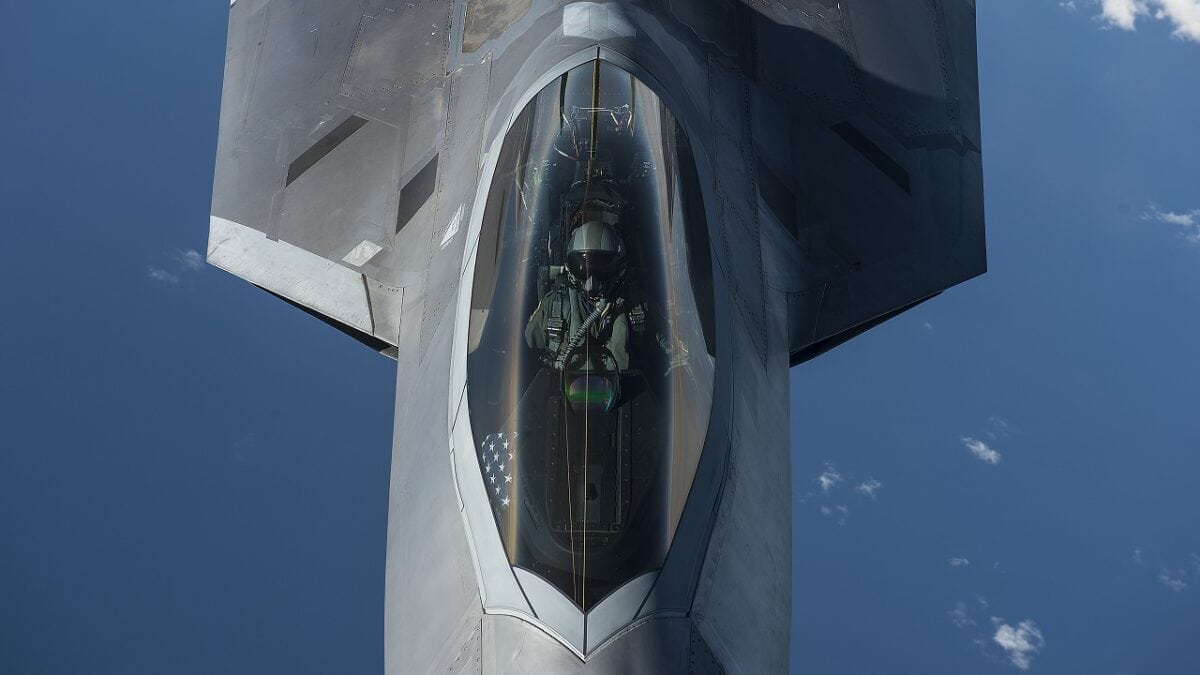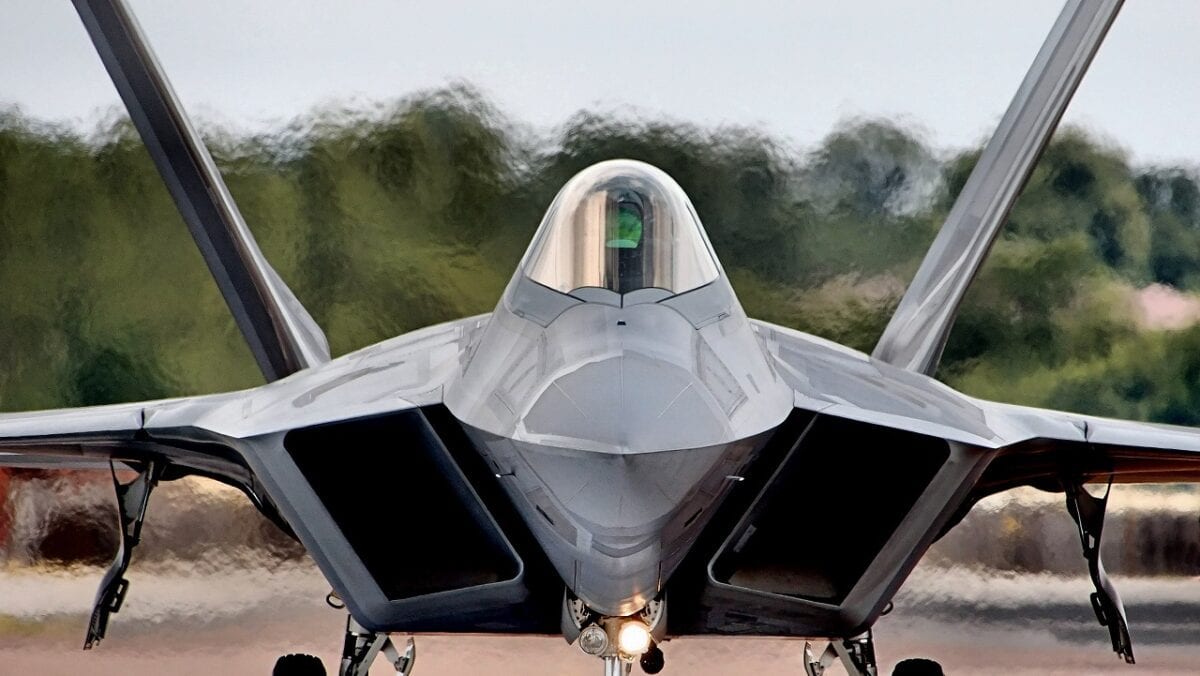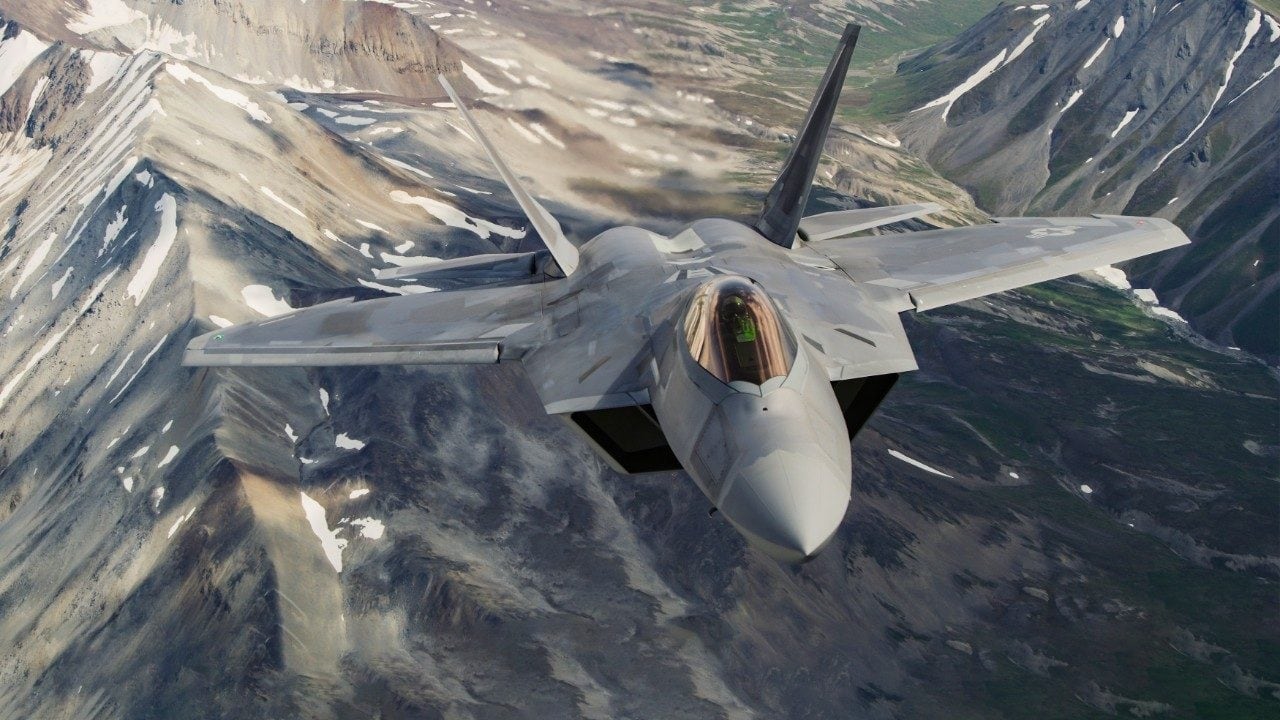Lockheed Martin is reportedly working on several major upgrades for its F-22 Raptor fighter jet. The current goal is to maintain the Raptor’s fighting edge until the rollout of the Next Generation Air Dominance (NGAD) platform in 2030.
Critics have pointed out that the investment for the upgrades, reportedly pegged at $9 billion by U.S. Air Force leadership, seems excessive for an aircraft that will begin to be phased out by the end of the decade.
But Lockheed executives and top Air Force brass contend that the modernization effort is vital — both to keep the F-22 relevant and to serve as a bridge until the NGAD is fully operational as a frontline fighter.
What Are the F-22 Upgrades?
The upgrades in question would help the F-22 “go further, sense further and shoot further,” according to Lockheed executive O.J. Sanchez. In practice this means a major upgrade to its sensor suite, a $4.13 billion task.
While it’s unclear exactly what this would look like, artist renderings and photographs of an F-22 near the Lockheed facility in Palmdale, California, show sleek, low profile pods mounted on wing pylons.
Current speculation suggests these are Infrared Search and Track (IRST) systems given their size and shape as well as previous comments by Lockheed indicating the lack of room for such systems within the fuselage. IRST is not a new technology, but recent advances have demonstrated its usefulness as a complement to radar in detecting low-profile stealth aircraft such as Russia’s Su-57 or China’s J-20.
The other major upgrade is stealthy fuel tanks. Most modern combat aircraft can carry external fuel tanks mounted on pylons. These tanks greatly increase their range at some cost to their speed and maneuverability.
When it comes to stealth aircraft such the F-22 and F-35, any external stores greatly increase their radar cross-section (RCS), making them far more detectable. The new fuel tanks seek to solve that problem by being stealthy themselves.
The Raptor has a respectable range of 550 miles on internal fuel alone, but this is not enough to tackle the vast distances associated with the Pacific theater. The airframe can mount current models of external drop tanks that allow it to travel up to 1,800 miles, a far more useful range. Presumably, the stealth tanks would carry a similar capability without majorly degrading its RCS.
Worth It?
As the Air Force seeks to develop the NGAD, leadership would like to allocate as much funding as possible to the program. The proposed upgrades for the F-22 come with a hefty price tag, and that money would most likely come out of the budget for the NGAD. Combined with the upcoming retirement of the Raptor, this seems like a considerable waste. But Brig. Gen. (Maj. Gen. Select) Dale White, the Air Force program executive officer for fighters and advanced aircraft, countered these concerns, laying out several pertinent reasons for pursuing an F-22 upgrade.

A U.S. Air Force F-22 Raptor pilot from the 95th Fighter Squadron, Tyndall Air Force Base, Fla., flies over the Baltic Sea Sept. 4, 2015. The U.S. Air Force has deployed four F-22 Raptors, one C-17 Globemaster III, approximately 60 Airmen and associated equipment to Spangdahlem Air Base, Germany. While these aircraft and Airmen are in Europe, they will conduct air training with other Europe-based aircraft. (U.S. Air Force photo by Tech. Sgt. Jason Robertson/Released)
Speaking at a conference in July, White highlighted the evolving nature of threats to the U.S. and the need to stay at the forefront of air dominance. Furthermore, he stressed the benefit of continuing to improve and mature these technologies for eventual use on the NGAD.
As such, continued investment in the F-22 seems to have an important role in preserving American interests now and preparing the Air Force to meet future threats.

F-22 Raptor. Image Credit: Creative Commons.
Maya Carlin, a Senior Editor for 19FortyFive, is an analyst with the Center for Security Policy and a former Anna Sobol Levy Fellow at IDC Herzliya in Israel. She has by-lines in many publications, including The National Interest, Jerusalem Post, and Times of Israel. You can follow her on Twitter: @MayaCarlin.

